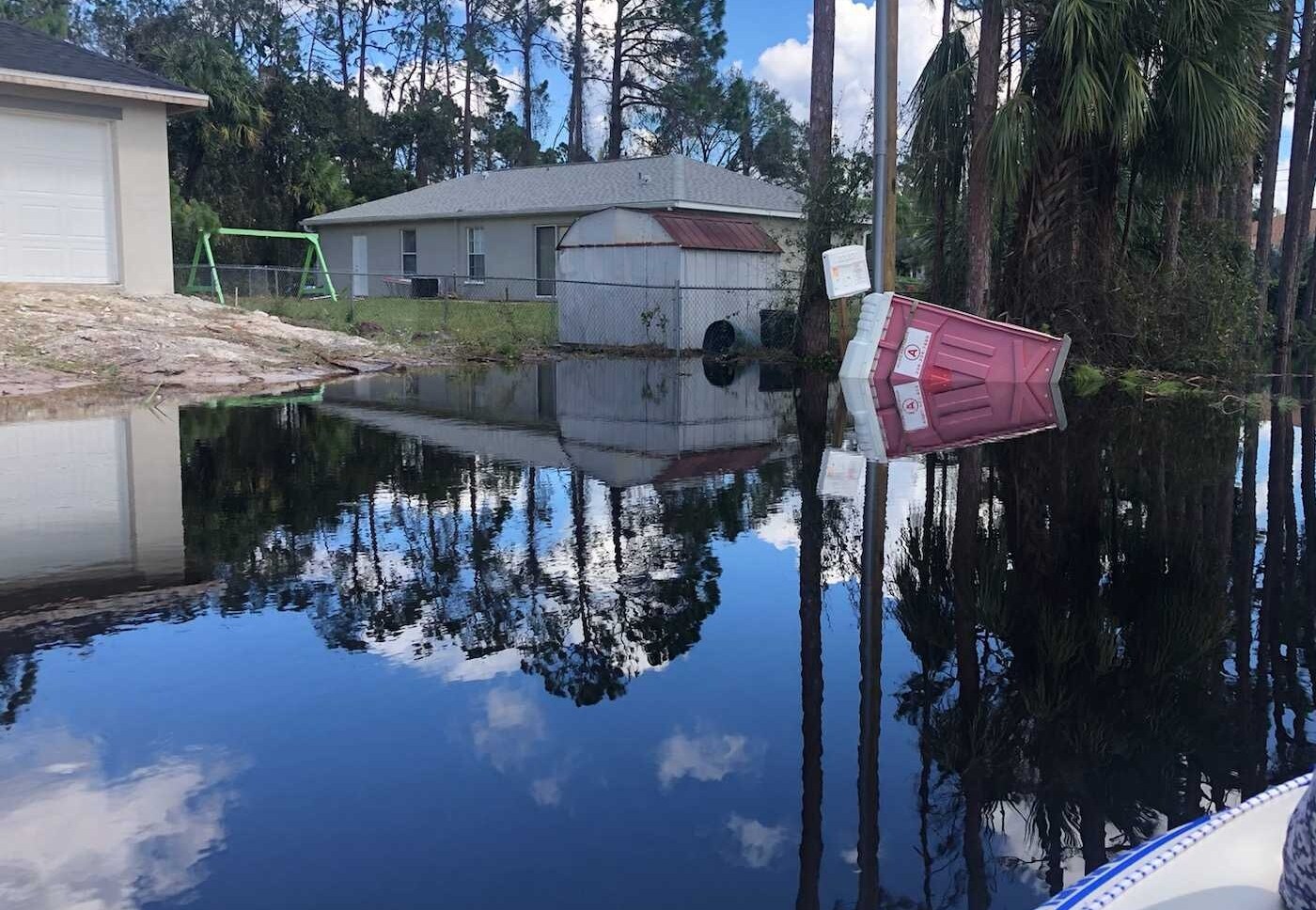“What’s in the water is pretty gross. Our bays look like root beer right now,” Tomasko said. “It smells terrible.”
Hurricane Ian, which initially made landfall in Florida as a Category 4 storm, left scars not only on the land but also in the water. The storm’s winds and excessive rain washed leaves, organic matter and contaminants into streams and the bays, signaling the beginning of serious environmental impacts that may emerge. Researchers say the degraded water quality could damage aquatic ecosystems for weeks, months or longer and pose a danger to human health in the short term. Images and videos from space captured the extent of the runoff.
Since Ian’s landfall a week ago, Tomasko said he received a dozen emails about overflows from wastewater treatment plants along the western coast of Florida, from Palmetto to Fort Myers. As of Tuesday, Orlando asked city residents to limit how often they flush toilets, take showers, wash dishes and do laundry because of overflowing sewers.
Satellites show an increase in runoff of some of these materials, soils and overflowing rivers on land into the ocean, as shown in images comparing Oct. 1 to six days earlier, before Ian hit. Major discoloration in near-shore waters indicate a change in the clarity of the water, or turbidity.
The brown water seen in the images contains a substance called tannins, which is dissolved organic matter that floats near the top of the water, making it look like tea or coffee. Some of the water’s turquoise color is likely due to organic matter and sediment churned to the surface by the hurricane.
“The fact that you can see it from a satellite is pretty impressive to the magnitude of freshwater that’s coming off the landscape,” said Todd Osborne, a biogeochemist at the University of Florida. “That’s all that excessive rain flushing that material out into the nearshore waters … and the storm surge inundating the landscape, turning up lots of sediment and then flowing back into the ocean.”
He said the amount of runoff caused by Ian is “just so much bigger than things we’ve seen in the past.”
Osborne said the emptying of freshwater streams into the ocean is a natural process and isn’t necessarily a harmful occurrence at small scale. The organic materials can in fact serve as food for microbial populations, which are consumed by other animals higher in the food web.
But hurricanes can put such systems into overdrive. Too much floating organic matter can block sunlight from reaching plants deeper in the ocean, decreasing their ability to make food through photosynthesis and eventually leading to the death of plant life. Microbes breaking down the organic matter also increase activity, consuming great quantities of oxygen that would otherwise be available for others; such oxygen-deprived waters make it difficult for plants and fish to survive.
Researchers are particularly concerned for the region’s sea grasses, which require a lot of light and help maintain the local ecosystem. They help prevent erosion, maintain water clarity by trapping sediments and particles with their leaves and provide food for animals and economically important fish. Poor water quality could wipe out parts of the local sea grass population.
“Time will tell how it shakes out, but depending on ocean currents and things, that’s a big concern from an environmental standpoint,” said Osborne. “The longer it takes for [the water] to settle out will define the impact it has on our near-shore sea grass habitats.”
The storm may have also washed in pesticides and herbicides from farms and yards as well as wastewater products into bodies of water, posing a risk to people’s health if they are exposed.
“Unless you absolutely have to be in the water, it’s not a good time to be in there,” he said.
Such human-induced pollutants and nutrients coming off the land can also spur harmful algal blooms that are dangerous for animals and people, said marine and environmental scientist Hans Paerl. Harmful algal blooms, also known as red tides, are especially prevalent off the western coast of Florida and can affect key fisheries important for the state’s economy.
“The story’s not over when the storm leaves. In fact, it’s sort of just beginning from an environmental perspective,” said Paerl, professor of at University of North Carolina-Chapel Hill. “With all that runoff, we’re getting a lot of nutrients that are coming off the land, particularly nitrogen and phosphorus, which can increase harmful algal blooms.”
Paerl said as climate change is increasing the amount of rainfall from a hurricane, he has observed major alterations in water quality and fisheries habitat in his study area in North Carolina as well.
Researchers are unsure how long water quality issues will last. Flooding has continued across parts of central Florida, raising river levels, creating more destruction and complicating cleanup efforts. Property loss is already estimated at more than $60 billion in Florida, according to an industry trade group.
Tomasko said the impacts Ian had on water quality are some of the worst in the state’s recent history, topping 2004′s Hurricane Charley, the last Category 4 storm to make landfall on the western coastline of Florida. After Charley rolled through, almost in the same location as Ian, it took weeks for improvements in impacted areas like the Charlotte Harbor, just north of Fort Myers. The nearby Peace River was under poor conditions for two to three months.
“It is the worst hurricane impact to a lot of our state, worse than Charley,” Tomasko said of Ian. “That’s saying a lot because Charley was pretty bad for a long time.”

















